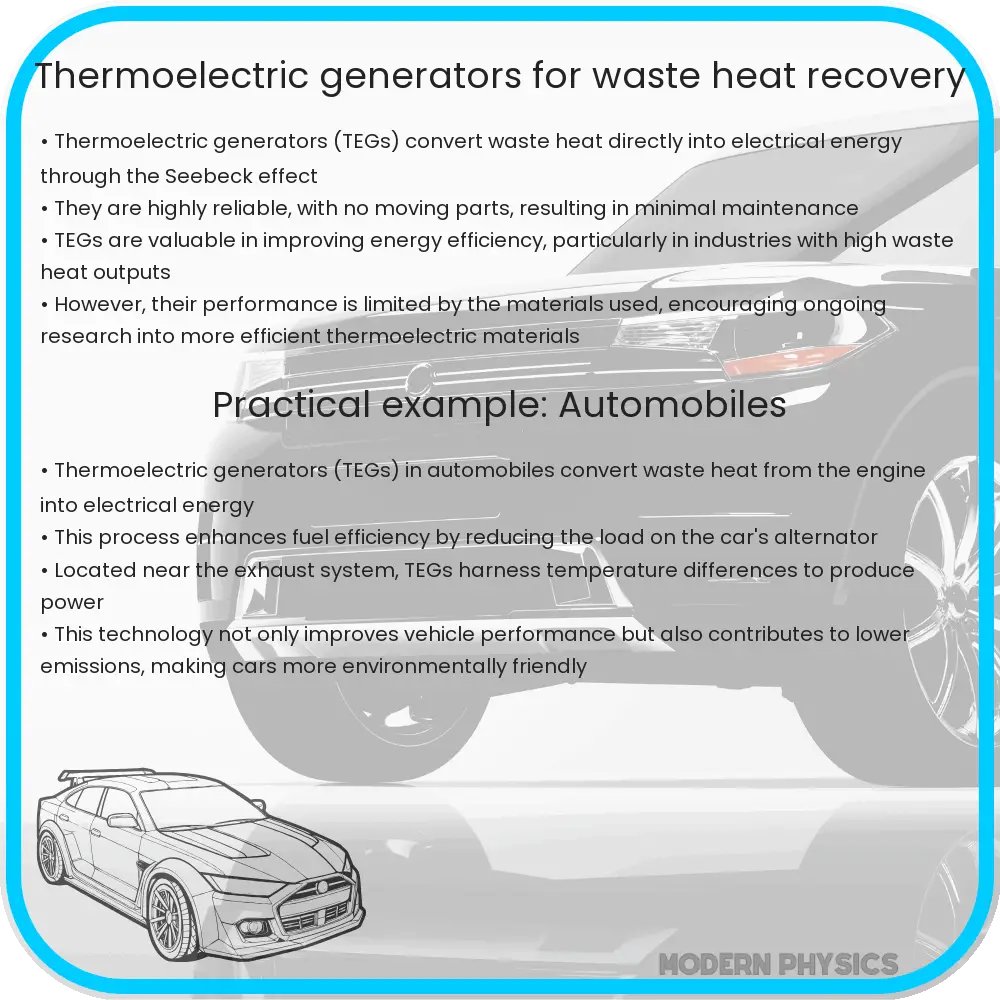Explore the efficiency, sustainability, and innovation behind Thermoelectric Generators (TEGs), a promising green technology in solid-state physics.

Understanding Thermoelectric Generators
Thermoelectric generators (TEGs) represent a fascinating segment of solid-state physics, offering a unique approach to energy conversion. Unlike traditional systems that require moving parts, TEGs convert temperature differences directly into electrical energy through the Seebeck effect. This process involves the flow of heat from a warmer area to a cooler area, creating an electric voltage. Notably, TEGs are composed of thermoelectric materials, typically semiconductors, that exhibit this property.
Efficiency of Thermoelectric Generators
The efficiency of TEGs is a critical factor, typically measured by the dimensionless figure of merit, ZT. The ZT value is defined as ZT = (S2σT)/κ, where S represents the Seebeck coefficient, σ is the electrical conductivity, T is the absolute temperature, and κ denotes the thermal conductivity. Higher ZT values indicate more efficient thermoelectric materials. Despite advancements, most TEGs have ZT values between 1 and 2, highlighting the ongoing challenge to enhance their efficiency for practical applications.
Sustainability and Environmental Impact
TEGs offer a sustainable alternative to conventional power generation methods. They can harness waste heat from industrial processes, vehicles, or natural sources, converting it into useful electrical power without emitting greenhouse gases. This capability aligns with global efforts to reduce carbon footprints and promote renewable energy sources. However, the sustainability of TEGs also depends on the materials used in their construction, driving research towards environmentally friendly and abundant materials.
Innovation in Thermoelectric Materials
Recent innovations in thermoelectric materials focus on enhancing the efficiency and sustainability of TEGs. Researchers are exploring new materials such as skutterudites, clathrates, and half-Heusler compounds, which promise higher ZT values and better thermal stability. Nanotechnology has also played a pivotal role, as nanostructuring materials can significantly reduce thermal conductivity while maintaining or improving electrical properties. This approach has led to notable improvements in thermoelectric performance, opening new avenues for energy harvesting and cooling applications.
Applications and Future Prospects
Thermoelectric generators have a wide range of applications, from remote power generation to automotive energy recovery systems. In space exploration, TEGs power spacecraft and rovers, utilizing the heat from radioactive decay. In the automotive industry, they can convert exhaust heat into electrical energy, improving fuel efficiency. Additionally, TEGs are being integrated into wearable technology, offering a sustainable power source by harvesting body heat.
Despite their potential, the widespread adoption of TEGs faces hurdles, primarily due to their current cost and efficiency limitations. However, ongoing research and technological advancements are expected to overcome these barriers. For instance, the development of flexible and scalable thermoelectric materials could pave the way for more diverse applications, making TEGs a cornerstone of future green technologies.
Conclusion
Thermoelectric generators stand at the intersection of sustainability, innovation, and solid-state physics. They offer a promising avenue for energy conversion, capable of turning waste heat into electricity without moving parts or emissions. While challenges remain in terms of efficiency and cost, continuous advancements in materials science and nanotechnology hold the key to unlocking their full potential. As society moves towards greener alternatives, TEGs may play a crucial role in our energy landscape, contributing to a more sustainable and efficient use of our resources.
